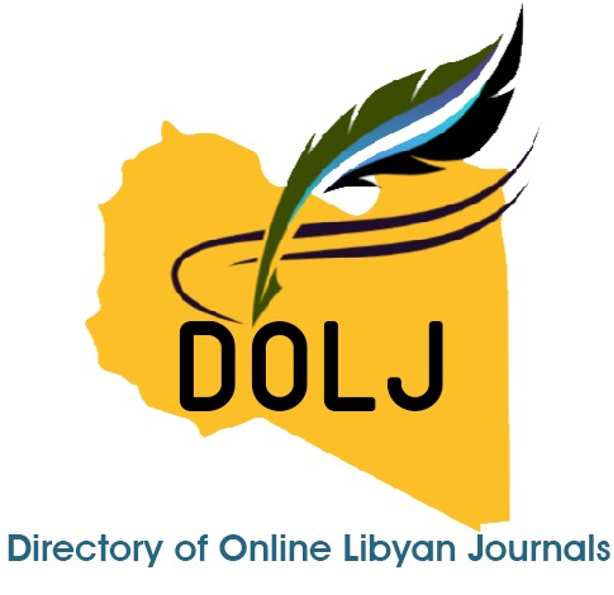النمذجة الافتراضية وتحليل الامتصاص الكهرومغناطيسي لمركبات ZnO/SiO₂-PCL
DOI:
https://doi.org/10.36602/jsba.2025.20.59%20الكلمات المفتاحية:
Microwave Absorbing، Complex permittivity، Absorption coefficient، Reflection loss.الملخص
ركّزت الأبحاث الحديثة على تطوير مواد ماصّة للموجات الكهرومغناطيسية تمتاز بأداء امتصاصي عالٍ، وسُمكٍ رقيق، وكثافة منخفضة، ووزنٍ خفيف، وتكلفةٍ منخفضة، إضافةً إلى نطاق امتصاصٍ واسع. في هذه الدراسة، تم إنشاء نموذج افتراضي لمركّب قائم على بولي كابرولاكتون PCL مدعّم بنسب مختلفة من أكسيد الزنك النانوي ZnO وثاني أكسيد السيليكون SiO₂ . باستخدام برنامج COMSOL Multiphysics استُخدم نموذج دليل موجي مستطيل لمحاكاة جهاز التحليل الشبكي Network Analyzer – NWA المستخدم في قياسات انتقال الموجات، وحُسبت السماحية المركبة للعينة عند تراكيز مختلفة من المضافات النانوية. أظهرت النتائج زيادة في ثابت العزل الكهربائي من 2.893 إلى 3.833 ، وارتفاع عامل الفقد العزلي من 0.253 إلى 0.369 بزيادة محتوى ZnO و SiO₂. في المقابل، انخفض فقد الانعكاس RL ليصل إلى 3.718 dB ، بينما ازداد معامل الامتصاص إلى 0.110 ، وبلغ معامل التوهين 3.2393 dB عند تردد 10 GHz وبسماكة ممتص قدرها 0.003 m. تُظهر هذه النتائج إمكانية استخدام مركّبات PCL/ZnO/SiO₂ كمواد خفيفة الوزن وفعّالة في امتصاص الموجات الميكروية.
المراجع
[1] N. Wongkasem, "Electromagnetic pollution alert: Microwave radiation and absorption in human organs and tissues," Electromagnetic Biology and Medicine, vol. 40, no. 2, pp. 236–253, 2021.
[2] K. A. Hossain, "Study on electromagnetic interference (EMI) and electromagnetic compatibility (EMC): Sources and design concept for mitigation of EMI/EMC," Journal of Liberal Arts and Humanities (JLAH), vol. 4, no. 8, pp. 68–96, 2023.
[3] Z. Wei, Z. Li, D. Chen, J. Liang, and J. Kong, "Recent progress of advanced composites for broadband electromagnetic wave absorption," Small Structures, vol. 6, no. 7, p. 2400615, 2025.
[4] L. Yan, J. Wang, X. Han, Y. Ren, Q. Liu, and F. Li, "Enhanced microwave absorption of Fe nanoflakes after coating with SiO2 nanoshell," Nanotechnology, vol. 21, no. 9, Art. no. 095708, 2010.
[5] M. Chen, Y. Zhu, Y. Pan, H. Kou, H. Xu, and J. Guo, "Gradient multilayer structural design of CNTs/SiO2 composites for improving microwave absorbing properties," Materials & Design, vol. 32, no. 5, pp. 3013–3016, 2011.
[6] F. Ahmad, Z. Abbas, S. J. Obaiys, and D. M. Abdalhadi, "Attenuation performance of polymer composites incorporating NZF Filler for electromagnetic interference shielding at microwave frequencies," J. Mater. Sci Eng, vol. 5, p. 2169-0022, 2016.
[7] L. Feng et al., "Two-dimensional transition metal dichalcogenides based composites for microwave absorption applications: a review," J. Phys.: Energy, 2022
[8] Y. I. Abdulkarim et al., “A review on metamaterial absorbers: Microwave to optical,” Frontiers in Physics, vol. 10, p. 893791, 2022.
[9] J. Huo, L. Wang, and H. Yu, "Polymeric nanocomposites for electromagnetic wave absorption," J. Mater. Sci., vol. 44, no. 14, pp. 3917–3927, Jul. 2009.
[10] T. Sajjad, M. Maleki, and M. Babamoradi, “Microwave absorption theory and recent advances in microwave absorbers by polymer-based nanocomposites (carbons, oxides, sulfides, metals, and alloys),” Inorg. Chem. Commun., vol. 153, p. 110407, 2023, doi: 10.1016/j.inoche.2023.110407.
[11] V. J. Hegde, O. Gallot-Lavallée, and L. Heux, “Dielectric study of Polycaprolactone: A biodegradable polymer,” in 2016 IEEE Int. Conf. on Dielectrics (ICD), vol. 1, pp. 293-296,Jul.2016,doi:10.1109/ICD.2016.7547565.
[12] L. W. McKeen, Permeability properties of plastics and elastomers. William Andrew, 2016.
[13] L. Jiang and J. Zhang, “Biodegradable and biobased polymers,” in Applied plastics engineering handbook, W. Andrew Pub., 2017, pp. 127–143.
[14] X. H. Tang, J. Li, Y. J. Tan, J. H. Cai, J. H. Liu, and M. Wang, “Achieve highperformance microwave shielding in poly (ε-caprolactone)/multi-wall carbon nanotube composites via balancing absorption in conductive domains and multiple scattering at interfaces,” Appl. Surf. Sci., vol. 508, p. 145178,2020,doi:10.1016/j.apsusc.2019.145178.
[15] A. Yakubu, Z. Abbas, N. A. Ibrahim, and A. Fahad, “Reduction of electromagnetic interference using ZnO-PCL nanocomposites at microwave frequency,” Adv. Mater. Sci. Eng.,vol.2015,2015,doi:10.1155/2015/141029. .
[16] S.O. Nelson, “Measurement and calculation of powdered mixture permittivities,” IEEE Trans. Instrum. Meas., vol. 50, no. 5, pp. 1066–1070, Oct. 2001, doi: 10.1109/19.963162.
[17] E. E. Mensah, Z. Abbas, N. A. Ibrahim, A. M. Khamis, and D. M. Abdalhadi, “Complex permittivity and power loss characteristics of α-Fe$_2O_3$/polycaprolactone (PCL) nanocomposites: Effect of recycled α-Fe$_2O_3$ nanofiller,” Heliyon, vol. 6, no. 12, p. e05595, Dec. 2020, doi: 10.1016/j.heliyon. 2020.e05595. .
[18] Y. Yang, W. Guo, X. Wang, Z. Wang, J. Qi, and Y. Zhang, “Size dependence of dielectric constant in a single pencil-like ZnO nanowire,” Nano Lett., vol. 12, no. 4, pp. 1919–1922, Apr. 2012, doi: 10.1021/nl204482m.
[19] B. Du, M. Cai, X. Wang, J. Qian, C. He, and A. Shui, “Enhanced electromagnetic wave absorption property of binary ZnO/NiCo$_2O_4$ composites,” J. Adv. Ceram., vol. 10, no. 4, pp. 832–842, Jul. 2021, doi: 10.1007/s40145-021-0466-4.
[20] Q. Chen, L. Li, Z. Wang, Y. Ge, C. Zhou, and J. Yi, “Synthesis and enhanced microwave absorption performance of CIP@SiO2@Mn0.6Zn0.4Fe2O4 ferrite composites,” J. Alloys Compd., vol. 779, pp. 720–727, Mar. 2019, doi: 10.1016/j.jallcom.2018.11.298.
[21] G. Liu, L. Wang, G. Chen, S. Hua, C. Ge, H. Zhang, and R. Wu, “Enhanced electromagnetic absorption properties of carbon nanotubes and zinc oxide whisker microwave absorber,” J. Alloys Compd., vol. 514, pp. 183–188, Feb. 2012, doi: 10.1016/j.jallcom.2011.10.106.
[22] Y. Liu, X. Du, C. Wu, Y. Liu, Y. Liu, and G. Zhao, “Reduced graphene oxide decorated with ZnO microrods for efficient electromagnetic wave absorption performance,” J. Mater. Sci.: Mater. Electron., vol. 31, no. 11, pp. 8637–8648, Jun. 2020, doi: 10.1007/s10854-020-03387-y
[23] A. F. Ahmad, Z. Abbas, S. J. Obaiys, and D. M. Abdalhadi, “Attenuation performance of polymer composites incorporating NZF Filler for electromagnetic interference shielding at microwave frequencies,” J. Mater. Sci. Eng., vol. 5, no. 1, p. 2169-0022, Jan. 2016.
[24] L. Zhang, L. Wang, Q. Wang, and W. Ding, “Dielectric, magnetic, and microwave absorbing properties of Ag-plated terapod-like ZnO whiskers,” Mater. Sci. Eng. B, vol. 262, p. 114682, Dec. 2020, doi: 10.1016/j.mseb.2020.114682.
[25] Z. Jia, J. Liu, and G. Wu, “Molecular Intercalation‐Induced Two‐Phase Evolution Engineering of 1T and 2H-MS2 (M=Mo,V,W) for Interface‐Polarization‐Enhanced Electromagnetic Absorbers,” Adv.















